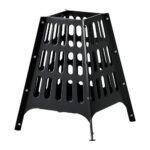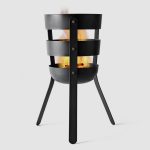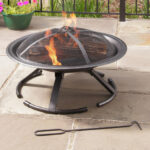Summertime means more people are out and about, including bringing their four-legged friends along. While the weather’s warm and the living is easy, as they say, there are more things out in the environment that can cause problems with animals. Protect your pet with pet first aid and have a pet first aid kit on hand when you’re out in the heat.
Take a pet first-aid course.
The American Red Cross offers pet first aid classes. Find one through your local chapter. In this class you can learn how to treat basic wounds in your animals, how to help if your pet is choking, how to identify signs of heatstroke, how to handle poison, and many other situations that can arise out of the blue that you may not be prepared for.
Items for your pet first aid kit.
The Humane Society has a list of items it recommends to have on hand in a pet first aid kit. We can’t argue with any of its advice, and we’re giving a basic outline here, but the one item the Humane Society does not list in its kit that we think is important is a bag of treats! If you have to use tweezers or pliers to get something out of your pet’s paw,or if your best friend gets stung on the face and nose by a swarm of angry bees as happened to my dog once, that poor animal sure deserves a treat afterward, don’t you think? Keep a kit at home as well as in your car, and prepare a travel-friendly version if you’re going to be away from your usual stash of supplies.
Here are some items for your pet first aid kit.
Extra collar, ID tag and leash
You never know when you might lose one.
Vet information and medical records
Note your veterinarian’s name and number, and print out the medical records in case you have to go somewhere where they are not familiar with your animal. If you’re traveling somewhere, take a moment to look in advance to locate a vet’s office as well as an emergency clinic, just in case. No one wants to be camping or somewhere where there isn’t phone service and be stuck trying to figure out where you can take your dog in an emergency when you have no one to ask.
Basic First Aid Supplies
Think of the basic items that you would pack for a human first aid kit. Pack basic bandaging items such as gauze and tape, a thermometer and petroleum jelly for lubrication and disposable gloves, antiseptic soap or cleaning solution.
Scissors
In case you need to open packaging, cut off a collar, or cut off something the animal has gotten into.
Tweezers/pliers
You can use these items to remove bee stinger or ticks. The pliers might be useful if the animal gets into something bigger than what you can handle with tweezers, such as a nail or splinter of some sort stuck in a paw or if he or she gets wrapped up in a tangled piece of wire. You never know what’s out there.
Allergy medication
Ask a veterinarian for supervision on what medication might be good to keep on hand for your particular pet. A vet must determine the correct dosage. My dog once was walking on a leash with me along a lakeshore when he accidentally stepped on an underground bee nest. Both he and I got stung repeatedly. He was really uncomfortable and I was scared! If I’d had something on hand to help him, he would have felt better a lot faster.
Calming medication
This is another one to get your veterinarian’s advice on. You may end up in a place with a severe thunderstorm that could scare your dog as much as fireworks do. Or, if there is a weather disaster or other unexpected event, you may be grateful to have the calming medication on hand until you can get somewhere safe. Wouldn’t hurt to have some calming medication on hand for humans too, now that I think about it!
Booties
It’s not a bad idea to make booties to protect your dog’s paws a part of your every day attire, but at any event, keep a pair in your kit in case of emergency. You may spontaneously end up somewhere with hot sand, hot pavement or other uncomfortable conditions. Humans wear shoes, so we don’t usually think much about the surface we’re walking on but dogs are directly in contact. Booties help protect their paws from any weather condition or terrain.
Baking soda
A baking soda and water paste can be applied to soothe skin conditions from bug bites to skunk spray. You can also sprinkle baking soda on your dog to give them a freshening dry bath if they’ve gotten into something and you can’t properly bathe them.
Plastic baggies
Because you never know when you’ll need to collect something you don’t want to handle with your bare hands.
An emergency chew toy
What if his favorite chew toy gets lost? Or you forget to bring it? This way you won’t have to worry about him chewing on your sneakers or the expensive hotel towels.
Particular needs for your pet
If your dog is diabetic, you might need to keep on hand some sugar syrup, for instance. Perhaps eye drops or nail clippers would get used in your household.
If someone is taking care of your pet while you’re away, make sure they know where you keep your first aid kit and your records. If you’re going away and you’re not taking your animals with you, inform your veterinarian who you have left in charge of your animals, just in case there happens to be an emergency visit. Don’t lose valuable time if the vet has to track you down to make sure they have approval to treat your pets.
What do you keep in your pet first aid kit? Let us know!



